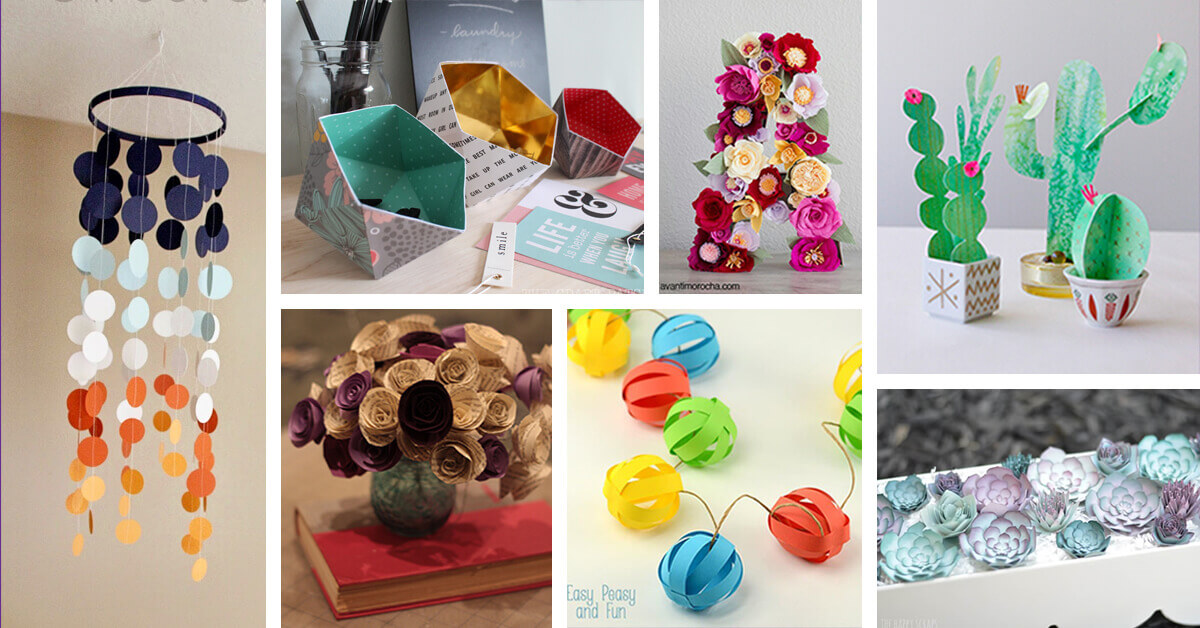Fun DIY projects to do at home for kids? Forget screen time, unleash inner Picassos (and maybe a little bit of mess)! This isn’t your grandma’s knitting circle – we’re talking exploding volcanoes (safe ones, promise!), edible masterpieces, and recycled-treasure transformations. Get ready for giggles, glue-gun glory, and memories that stick longer than glitter on a toddler’s hair.
We’ll explore easy crafts for tiny humans, slightly more challenging projects for the slightly less tiny, and even some eco-friendly fun that’ll make the planet (and your kids) smile.
From preschool-perfect playdough to elementary-school-approved science experiments, we’ve got a project for every age and skill level. We’ll cover everything from simple crafts using household items to more ambitious creations that’ll leave you both amazed. So grab your glitter, your glue, and your sense of adventure – let’s get crafting!
Unleashing Little Geniuses: Fun DIY Projects at Home: Fun Diy Projects To Do At Home For Kids
Dive into the wonderfully messy world of DIY projects with your kids! More than just crafting, these activities foster creativity, problem-solving skills, and a whole lot of fun. Age-appropriate projects are key; we’ll explore options for preschoolers all the way up to older elementary school kids, ensuring every child finds something exciting and engaging. From simple crafts to science experiments and eco-friendly creations, we’ve got a treasure trove of ideas waiting to be discovered.
Easy Crafts for Younger Children
For our youngest artists, we’ll focus on projects that are simple, quick, and use materials you probably already have around the house. These crafts emphasize the joy of creation and develop crucial fine motor skills.
- Paper Plate Animals: Transform plain paper plates into adorable zoo animals! Simply cut out shapes for ears, tails, and other features, then glue them onto the plate. Use markers or crayons to add details like eyes and spots. A colorful ladybug, a fluffy bunny, or even a fierce lion are all within reach!
- DIY Salt Dough Ornaments: Mix flour, salt, and water to create a simple dough. Roll it out, use cookie cutters to create shapes, and bake until hard. Once cool, decorate with paint, glitter, and ribbons. These personalized ornaments make fantastic gifts or festive decorations.
- Toilet Paper Roll Crafts: Give those empty toilet paper rolls a new life! They can become anything from cute little owls (with construction paper wings and googly eyes) to rockets (with painted fins and a tissue paper flame). Let your child’s imagination soar!
| Craft | Materials | Time Required | Skill Level |
|---|---|---|---|
| Paper Plate Animals | Paper plates, scissors, glue, markers/crayons | 15-20 minutes | Beginner |
| Salt Dough Ornaments | Flour, salt, water, cookie cutters, paint, glitter, ribbon | 45 minutes – 1 hour (including baking time) | Easy |
| Toilet Paper Roll Crafts | Toilet paper rolls, paint, glue, construction paper, other craft supplies | 20-30 minutes | Beginner |
These crafts help develop fine motor skills through cutting, gluing, and painting, while simultaneously nurturing creativity and self-expression. The sense of accomplishment from creating something tangible is incredibly rewarding for young children.
Intermediate Projects for Elementary-Aged Kids
Older elementary school children are ready to tackle projects with more steps and techniques. These activities encourage problem-solving and build confidence in their abilities.
- DIY Bird Feeders: Construct a simple bird feeder using recycled materials like plastic bottles or pine cones. This project combines creativity with learning about nature and environmental responsibility.
- Cut a hole near the top of a plastic bottle.
- Fill the bottle with birdseed.
- Poke small holes around the bottle to create perches.
- Hang the feeder outside.
Potential challenges include difficulty cutting the bottle and ensuring the feeder is secure. Adult supervision is recommended for cutting and securing.
- Friendship Bracelet Weaving: Learn the art of friendship bracelet weaving using embroidery floss. This project improves fine motor skills and teaches patience and persistence.
- Gather embroidery floss in your favorite colors.
- Tie the threads together and create a loop.
- Follow a basic weaving pattern or find one online.
- Continue weaving until the desired length is reached.
- Tie off the ends securely.
Challenges might include mastering the weaving pattern. Start with a simple pattern and gradually move to more complex ones.
- Homemade Playdough: Create your own colorful and scented playdough. This project is a fun science experiment in itself, and the playdough can be used for countless creative activities.
- Combine flour, salt, water, oil, and food coloring in a saucepan.
- Cook over low heat, stirring constantly, until a dough forms.
- Let it cool slightly before kneading.
- Store in an airtight container.
Potential challenges involve careful measurement and cooking to achieve the right consistency. Adult supervision is recommended during the cooking process.
Creative Science Experiments for Kids, Fun diy projects to do at home for kids
Science doesn’t have to be boring! These experiments are fun, educational, and easy to do at home. They teach basic scientific principles in an engaging way.
- Baking Soda and Vinegar Volcano: Create a miniature volcano using baking soda and vinegar. This classic experiment demonstrates a chemical reaction.
- Build a volcano model using clay or cardboard.
- Place a small container inside the volcano’s crater.
- Add baking soda to the container.
- Slowly pour vinegar into the container. Observe the eruption!
Safety precaution: Supervise children closely to prevent spills and eye contact with the mixture.
- Rainbow Density Tower: Layer different liquids (honey, corn syrup, dish soap, water, oil) in a tall glass to create a colorful density tower. This visually stunning experiment demonstrates the concept of density.
- Carefully pour each liquid into the glass, starting with the densest (honey) and ending with the least dense (oil).
- Observe how the liquids separate based on their density.
Safety precaution: Handle liquids carefully to avoid spills.
- Making Slime: Create homemade slime using glue and borax. This experiment teaches about polymers and their properties.
- Mix glue, water, and borax solution.
- Knead the mixture until it forms a slime-like consistency.
Safety precaution: Supervise children closely, especially with the borax solution. Avoid ingestion.
Recycled Material Projects
Reduce, reuse, recycle! These projects show how everyday trash can be transformed into amazing creations. It’s a fun way to teach kids about environmental responsibility.
- Cardboard Box Playhouse: A large cardboard box can become a magical castle, a spaceship, or a cozy little house. Let your child’s imagination run wild! Imagine a vibrant, whimsical castle with crayon-drawn battlements, a moat crafted from blue construction paper, and a drawbridge made of sturdy cardboard strips. Cut windows and doors, add paint and decorations, and the transformation is complete!
- Plastic Bottle Flower Pots: Cut the tops off plastic bottles and decorate them with paint, markers, or glitter. These colorful pots are perfect for planting small herbs or flowers. Picture these transformed bottles: brightly colored, perhaps with whimsical faces painted on them, ready to house miniature succulents or cheerful pansies.
- Egg Carton Animals: Egg cartons can be easily transformed into cute little animals. Cut and shape the individual cups to create body parts, then glue them together and add details with paint and other craft supplies. Envision adorable chicks, playful puppies, or even fantastical creatures emerging from the humble egg carton, their details painstakingly crafted with paint and tiny scraps of felt.
Using recycled materials not only saves resources but also reduces waste and teaches children about the importance of environmental conservation. It’s a win-win!
Fun with Food: Edible DIY Projects
These edible crafts are a delicious way to combine creativity and culinary fun. They’re safe, simple, and incredibly satisfying to make and eat.
| Edible Craft | Ingredients | Steps |
|---|---|---|
| Fruit Pizza | Sugar cookie, cream cheese frosting, assorted fresh fruits | Bake a sugar cookie, frost it, and arrange fruits in a decorative pattern. |
| Ants on a Log | Celery sticks, peanut butter, raisins | Fill celery sticks with peanut butter and top with raisins. |
| Rice Krispie Treats Pops | Rice Krispies, marshmallows, butter, lollipop sticks | Melt marshmallows and butter, mix with Rice Krispies, and shape into pops using lollipop sticks. |
The sensory experience of making and eating these treats is delightful. The tactile sensation of shaping dough or assembling ingredients, combined with the sweet taste and satisfying crunch, creates a multi-sensory experience that enhances the enjoyment.
Learn about more about the process of craft ideas for kids under 10 in the field.
Tips for Parents and Caregivers
Creating a positive and productive crafting environment is crucial. Here are some tips to help you and your child enjoy the process.
- Set up a dedicated crafting space: Designate a specific area for crafting to keep things organized and prevent messes from spreading.
- Encourage creativity and problem-solving: Let your child explore their ideas without judgment. Guide them through challenges rather than providing direct solutions.
- Practice patience and positive reinforcement: Crafting can be messy and frustrating at times. Be patient, offer encouragement, and celebrate their accomplishments.
So there you have it – a whirlwind tour of crafting chaos and creative genius! Remember, the most important ingredient in any DIY project isn’t glitter (though it’s definitely a contender), it’s the joy of creating together. Embrace the mess, celebrate the successes (even the slightly wonky ones), and most importantly, have a blast! Your kids will learn, grow, and create memories that will last a lifetime – and you might just discover a hidden talent or two along the way.
Now go forth and craft!
Commonly Asked Questions
What if my child gets frustrated with a project?
Remember, the goal is fun, not perfection! Offer encouragement, break down complex tasks into smaller steps, and celebrate even the smallest successes. Sometimes, a little break and a change of project can do wonders.
How can I make DIY projects safer for younger children?
Adult supervision is key! Choose age-appropriate materials and tools, and ensure the workspace is clean and organized. Consider using child-safe alternatives for potentially hazardous materials.
What if I don’t have all the materials listed for a project?
Get creative! DIY is all about improvisation. Substitute materials as needed – often, a similar item will work just as well. The focus is on the process and the fun, not strict adherence to a list.
How do I clean up the inevitable mess?
Embrace the chaos (briefly!), then involve your kids in the clean-up process. Make it a game – who can pick up the most glitter? This teaches responsibility and reinforces the idea that even messy fun has an end.


